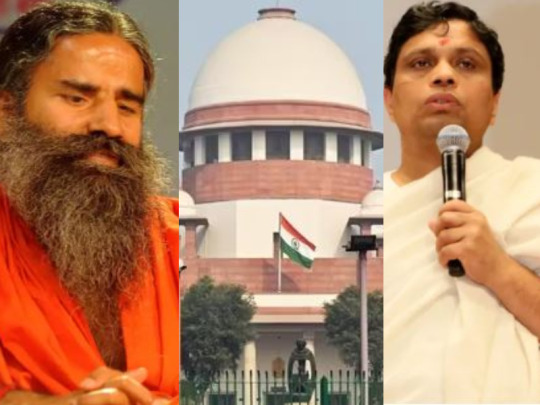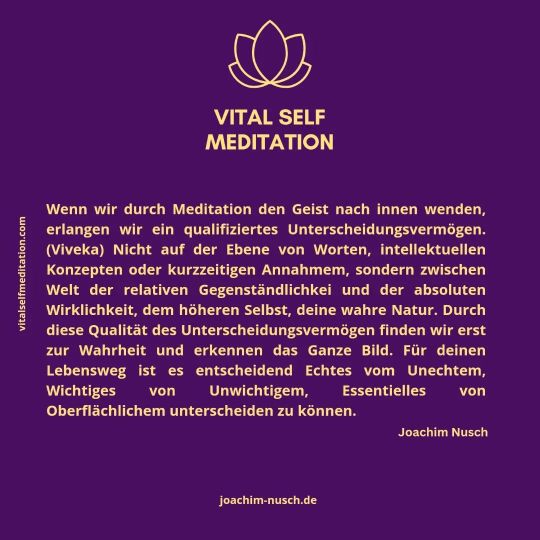#patanjali ayurveda
Text

ఓ౩మ్ జీ ప్రణామ్ 🙏🏼
శ్రీ మహావిష్ణువు యోగనిద్ర నుండి ఉపక్రమించి ఉత్తర ద్వారం ద్వారా భక్తుల వరాలు తీర్చే శుభదినాన లోకమంతా సుభిక్షంగా ఉండాలని, మహిమాన్వితమైన శ్రీమన్నారాయణుడి కృపా కటాక్షాలు ప్రజలందరిపై ఉండాలని కోరుకుంటూ పతంజలి ఆంధ్రప్రదేశ్ పరివారం తరపున వైకుంఠ ఏకాదశి శుభాకాంక్షలు తెలుపుతోంది🙏🏽🇮🇳🙏🏽
Ekadashendriye papam yatkritam bhavati prabho...
Ekadashi upavasan tat sarvam vilayam wajet...
To atone for the mistakes and sins committed by a person, 'Ekadashi Vrat' should be done. Especially Vaikuntha Ekadashi is the best.
#వైకుంఠఏకాదశిశుభాకాంక్షలు
#ವೈಕುಂಠಏಕಾದಶಿಯ #வைகுண்டஏகாதசி
#वैकुण्ठएकादशी #VaikunthaEkadashi
#Yoga #Ayurveda #Yagya #Naturopathy
#PatanjaliYogPeeth #Gurukulam
#Patanjaliwellness #DivyaPharmacy
#PatanjaliResearchInstitute
#BharatSwabhimanTrust
#PatanjaliYogSamiti #MahilaPatanjaliYogSamiti
#YuvaBharat #KisanSevaSamiti
#YogPracharakVibhag #SocialMedia
#YCB #AYUSH #IDY #Swadeshi
#LegalCell #TeluguStates #APTGstates
#AndhraPradesh #TelanganaState #SouthIndia #BHARAT
https://twitter.com/ShyamAndhra_YB/status/1738382341578572224?s=19
2 notes
·
View notes
Text
#healthcare#immunity#immunitybooster#youtube#multiberry#harbal life#greenshield#ayurveda#patanjali#pranacharya
0 notes
Text
Acupressure Points For Sleep Disorder, Headache, Migraine
Press At The Tip Of The Thumb Slowly Slowly (Do This For Around 1 Minute Each Thumb)
…
Contact Us Now: 8287445808
Visit us at www.sppc.in
location:- Shanti Marg, Narwana Rd, near Manglam Red Light, Block E West Vinod Nagar, New Delhi, Delhi 110092
#SPPC#patanjali#ayurveda#hospital#Naturopathy#Acupressure#SleepDisorder#HeadacheRelief#MigraineRelief#NaturalRemedies#WellnessTips#SelfCare#HolisticHealth#StressRelief#HealthyLiving
0 notes
Text
Amla With Seeds | Amla Desi | Sukha Awla | Aavla Sabut | Dry Gooseberry | Usirikaya dried #jayherbs
YOUTUBE LINK -
https://youtube.com/c/JayJainHerbsDealer
Message us on WhatsApp..
+91-8309989127
#herb #ayurvadic #unani #jayherbs #Jadibuti #rawherbs #chemicals #Thymol #menthol #ayurveda #ayurvedic #cinnaber #arsenic #unani #liquidmercury #ayurvedapharma #PharmaGrade #unanipharma #आयुर्वेद #pharmacy #pharmacysupply #jayjadibutiwala #8309989127 #herbaldealer #jayjain #digitalmarketingservices
0 notes
Link
0 notes
Text
पतंजलि के भ्रामक विज्ञापन: बाबा रामदेव व आचार्य बालकृष्ण ने सुप्रीम कोर्ट के समक्ष मांगी मौखिक माफी
New Delhi : बाबा रामदेव और पतंजलि आयुर्वेद लिमिटेड के प्रबंध निदेशक आचार्य बालकृष्ण ने मंगलवार को सुप्रीम कोर्ट के समक्ष मौखिक रूप से बिना शर्त माफी मांगी।
पीठ ने सवाल किया कि आपने चिकित्सा की अन्य प्रणालियों को त्यागने के लिए क्यों कहा।
इसके जवाब में बाबा रामदेव ने कहा कि पतंजलि ने आयुर्वेद को साक्ष्य-आधारित चिकित्सा प्रणाली बनाने का प्रयास किया है। वह किसी की आलोचना नहीं कर रहे हैं।
इस पर…

View On WordPress
#Acharya Balkrishna#Baba Ramdev#Patanjali Ayurveda Limited Managing Director#unconditional apology before the Supreme Court
0 notes
Text

Congratulations to all indians.
#chandrayaan#india#isro#space#patanjali#yoga#yogasutras#meditation#asana#babaramdev#ayurveda#patanjaliproducts#patanjaliyoga#medicine
0 notes
Text
Attar Ayurveda Indigo Powder: काले बाल करने के लिए नेचुरल हेयर डाई
इंडिगो पाउडर को सभी जानते हैं लेकिन आज हम Attar Ayurveda Indigo Powder की बात करेंगे। इंडिगो पाउडर प्राकृतिक पदार्थ है जो बालों को बिना कोई नुकसान पहुंचाए नेचुरल तरीके से काला और डार्क ब्राउन रंग देता है।
Attar Ayurveda Indigo Powder क्या है?
इंडिगो पाउडर ना तो मेहंदी है ना ही कोई केमिकल युक्त प्रोडक्ट, यह एक प्राकृतिक पाउडर है जो पौधे से प्राप्त किया जाता है।
Attar ayurveda Indigo powder in…

View On WordPress
#Attar Ayurveda Indigo Powder in hindi#Attar Indigo powder benefits in hindi#Indigo powder benefits in hindi#Indigo powder for hair#Indigo powder how to use in hindi#Indigo powder in hindi#Indigo powder ingredients in hindi#Indigo powder kaha milega#Indigo powder ke fayde#Indigo powder ke nuksan#Indigo powder patanjali#Indigo powder price in hindi#Indigo powder side effects in hindi#Indigo powder uses in hindi#Sabse achcha indigo Powder konsa hai#इंडिगो को बालों पर कब तक रखना चाहिए?#इंडिगो कौन सा रंग देता है?#इंडिगो पाउडर कितने दिन में लगाना चाहिए?#इंडिगो पाउडर की कीमत कितनी है?#इंडिगो पाउडर को हिंदी में क्या कहते हैं?#इंडिगो पाउडर क्या काम करता है?#इंडिगो पाउडर नहाने के बम के लिए सुरक्षित है?#इंडिगो पाउडर से बाल काले होते हैं क्या?#इंडिगो ब्लैक है या ब्लू?#काले बालों के लिए कौन सा पाउडर सबसे अच्छा है?#क्या इंडिगो पाउडर के बाद नारियल तेल लगा सकती हूं?#क्या इंडिगो पाउडर को दही में मिला सकते हैं?#क्या बिना मेहंदी के नील पाउडर लगा सकते हैं?#क्या मैं इंडिगो के बाद अपने बालों में तेल लगा सकती हूं?#बिना डाई के बाल काले कैसे किए जा सकते हैं?
0 notes
Text
Escape to a world of tranquility and embark on a transformative journey of rejuvenation and renewal with our 4-Day Rejuvenation Retreat at Atmabodh Wellness. This carefully crafted package is designed to revitalize your body, refresh your mind, and restore your inner balance, allowing you to experience deep relaxation and renewed vitality.
0 notes
Photo

New Post has been published on https://www.knewtoday.net/the-legacy-of-patanjali-unraveling-the-history-and-philosophy-of-yoga/
The Legacy of Patanjali: Unraveling the History and Philosophy of Yoga

Patanjali is a significant figure in Indian history, particularly in the context of yoga and philosophy. However, it is important to note that the details of Patanjali’s life and the exact timeframe in which he lived are not definitively known. The information available about him primarily comes from ancient texts, particularly his renowned work called the “Yoga Sutras.”
Patanjali is believed to have lived sometime between the 2nd century BCE and the 4th century CE. He is revered as the compiler of the Yoga Sutras, a foundational text that systematized the philosophy and practice of yoga. The Yoga Sutras consists of 196 aphorisms or concise statements that provide guidance on various aspects of yoga, including ethical principles, meditation, and the attainment of spiritual liberation.
Patanjali is often considered the father of classical yoga, as his work served to organize and unify the diverse traditions and practices of yoga that existed at the time. He outlined the eightfold path of yoga known as Ashtanga Yoga, which consists of moral observances (yamas), self-disciplines (niyamas), physical postures (asanas), breath control (pranayama), withdrawal of the senses (pratyahara), concentration (dharana), meditation (dhyana), and samadhi (a state of profound meditation or union).
In addition to his contributions to yoga, Patanjali is also believed to have written works on grammar and Ayurveda, the traditional Indian system of medicine. However, these texts attributed to Patanjali are separate from the Yoga Sutras and are often referred to as the Mahabhashya (Great Commentary) and the Charaka Samhita, respectively.
Overall, Patanjali’s influence on yoga and his systematic approach to its practice has had a profound impact on the development and understanding of yoga in India and around the world.
Introduction: Unraveling the Legacy of Patanjali
Hindu author, mystic, and philosopher Patanjali, also known as Gonardiya or Gonikaputra, was a Siddhar. Although no one knows for sure when he lived, estimates based on an examination of his writings indicate that it was between the second and fourth century CE.
He is thought to have written and compiled several Sanskrit books. The Yoga Sutras, a traditional yoga treatise, are the best of these. While there are other recognized historical authors with the same name, it is disputed if the sage Patanjali is the author of all the writings attributed to him. The question of the historicity or identity of this author or these authors has received a lot of scholarly attention during the past century.
Patanjali’s Life and Historical Context
The word “Patanjali” is a composite name from “patta,” which is Sanskrit for “falling” and “aj,” which means “honor, celebrate, beautiful,” or “ajali,” which means “reverence, uniting palms of the hands.”
According to legend, the sage Patajali obtained Samadhi at the Brahmapureeswarar Temple in Tirupattur, Tamil Nadu, India, through yogic meditation. Within the Brahmapureeswarar Temple complex, the sage Patanjali’s Jeeva Samadhi, which is currently a closed meditation hall, is located next to Brahma’s shrine.
Patanjali’s life remains shrouded in mystery and uncertainty, with limited historical records available to provide concrete details. As a result, much of what is known about him is derived from legends, traditional accounts, and the inferences made from his writings.
The exact dates of Patanjali’s birth and death are unknown, and even his identity as an individual person is subject to debate. Some scholars propose that Patanjali may have been a compilation of multiple sages who contributed to the texts attributed to him. Nevertheless, the influence of Patanjali’s teachings and writings, particularly the Yoga Sutras, cannot be denied.
Patanjali is said to have lived during a significant era in Indian history, commonly believed to be between the 2nd century BCE and the 4th century CE. This period marked a time of cultural, intellectual, and philosophical development in ancient India, with various schools of thought emerging and flourishing.
Historical accounts depict India during Patanjali’s era as a diverse and vibrant society, with a rich tapestry of philosophical and spiritual traditions. Buddhism, Jainism, and various Hindu philosophical systems coexisted and influenced each other. It was within this cultural milieu that Patanjali’s teachings on yoga and spiritual liberation took shape.
Patanjali’s contributions extend beyond his work on yoga. He is also credited with writing the Mahabhashya, a commentary on grammar, which provided significant insights into the linguistic and grammatical aspects of the Sanskrit language. Additionally, Patanjali is associated with the Charaka Samhita, an important Ayurvedic text that focuses on traditional Indian medicine.
While details about Patanjali’s personal life are scarce, his impact on the development of yoga and philosophy is immense. His systematic approach to yoga in the form of the Yoga Sutras has provided a comprehensive guide for practitioners, emphasizing ethical principles, meditation techniques, and the attainment of spiritual enlightenment.
Patanjali’s teachings have transcended time and continue to shape the modern understanding and practice of yoga. His legacy remains a subject of reverence and inspiration for yogis, philosophers, and spiritual seekers alike, as they explore the depths of yoga’s transformative potential.
The Yoga Sutras: Uniting and Systematizing the Philosophies of Yoga
The Yoga Sutras of Patajali are a compilation of 195 sutras (aphorisms), according to Vysa and Krishnamacharya, and 196 sutras, respectively, on the philosophy and practice of yoga (according to others, including BKS Iyengar). The sage Patanjali in India collected and arranged knowledge about yoga from much older traditions to create the Yoga Sutras in the first decades CE.
The Yoga Sutras are well recognized for their mention of ashtanga, an eight-part practice that results in samadhi. The eight components are asana (yoga posture), yama (abstinences), niyama (observances), pratyahara (withdrawal of the senses), dharana (mind concentration), dhyana (meditation), and samadhi (absorption). The basic goal of practice is kaivalya, which involves separating purusha, the witness consciousness, from prakriti, the cognitive system, and freeing purusha from prakriti’s jumbled impurities.
The Samkhya ideas of purusha and prakriti were the foundation for the Yoga Sutras, which are frequently regarded as additive to them. It shares a close relationship with Buddhism and uses some of its vocabulary. In contrast to the Bhakti traditions and Vedic ritualism that were popular at the time, Samkhya, Yoga, and Vedanta, as well as Jainism and Buddhism, can be considered as distinct manifestations of a broad stream of ascetic traditions in ancient India.
Exploring the Eight Limbs of Yoga: Ashtanga Yoga
Ashtanga yoga, sometimes known as “the eight limbs of yoga,” is how Patanjali categorized ancient yoga in his Yoga Sutras . He identified the yamas (abstinences), niyamas (observances), asanas (postures), pranayamas (breathing), pratyaharas (withdrawals), dharanas (concentration), dhyanas (meditation), and samadhis as the eight limbs (absorption).
Yamas: Ethical Principles for Harmonious Living
In Hinduism, yamas are moral requirements that might be thought of as the “don’ts” in life. The five yamas that Patanjali enumerated in the Yoga Sutra
Ahimsa : Nonviolence, non-harming other living beings
Satya : truthfulness, non-falsehood
Asteya : non-stealing
Brahmacharya : chastity, marital fidelity or sexual restrain
Aparigraha : non-avarice, non-possessiveness
According to Patanjali, the virtue of nonviolence and non-harm to others (Ahimsa) leads to the giving up of animosity, which brings the yogi to the perfection of inner and exterior amity with everyone and everything.
Niyamas: Self-Disciplines for Personal Transformation
Niyama, or the “dos,” is the second part of Patanjali’s Yoga path and it consists of good deeds and observances.
Shaucha : purity, clearness of mind, speech and body
Santosha : contentment, acceptance of others, acceptance of one’s circumstances as they are.
Tapas : persistence, perseverance, austerity, asceticism, self-discipline
Svadhyaya : study of self, self-reflection, introspection of self’s thoughts, speech, and actions
Ishvarapranidhana : contemplation of the Ishvara God/Supreme Being .
The virtue of contentment and acceptance of others as they are (Santosha), according to Patanjali, leads to a state in which internal sources of joy matter most and the desire for external sources of pleasure fades.
Asanas: Physical Postures for Strength and Flexibility
An asana is a position that one can maintain for a while while remaining calm, stable, at ease, and motionless.
Siddhasana, which means “accomplished,” Padmasana, “lotus,” Simhasana, “lion,” and Bhadrasana, which means “glorious,” explains the motions of these four asanas as well as eleven more. Unlike any older type of yoga, asanas are prominent and abundant in modern yoga.
Pranayama: Harnessing the Power of Breath
The act of controlling one’s breath consciously (inhalation, full pause, exhalation, and empty pause). This can be accomplished in a number of ways, such by inhaling for a moment before stopping, expelling for a moment before starting, slowing the inhalation and exhalation, or purposefully altering the timing and length of the breath (deep, short breathing)
Pratyahara: Withdrawing the Senses for Inner Focus
Drawing one’s awareness inward is known as pratyahara. Retracting the sensory experience from outside objects is what it entails. It is a self-extracting and abstracting step.
Pratyahara is the deliberate closing of one’s thought processes to the sensory world, not one’s eyes to the sensory world. Pratyahara gives one the ability to quit being ruled by the outside world, focus on seeking self-knowledge, and enjoy the freedom that is natural in one’s inner reality.
Dharana: Cultivating Concentration and Single-Pointedness
Dharana, the sixth limb of yoga, is the act of keeping one’s attention on a specific inner condition, issue, or topic. The mind is fixed on a mantra, one’s breath, the navel, the tip of one’s tongue, or any other location, as well as an object one desire to watch or a thought or idea in one’s head. Fixing the mind entails maintaining a single concentration, avoiding mental wandering, and refraining from switching between subjects.
Dhyana: Journeying into the Realm of Meditation
Dhyana is thinking, reflecting on whatever Dharana has been paying attention to. Dhyana is the contemplation of the personal deity that was the emphasis of the sixth limb of yoga. If only one thing was the focus, then dhyana is the impartial, unassuming observation of that thing. If a certain thought or concept were the emphasis, Dhyana would be thinking about it from every angle, manifestation, and result. Dhyana is an unbroken stream of consciousness, current of thinking, and flow of awareness.
Samadhi: Attaining Union with the Divine
In Buddhism, Hinduism, Jainism, Sikhism, and yogic systems, samdhi (Pali and Sanskrit: ) is a state of meditative consciousness. It is the eighth and final component of the Noble Eightfold Path in Buddhism. It is the eighth and last limb in the Ashtanga Yoga system, according to Patanjali’s Yoga Sutras.
Conclusion: Honoring the Legacy of Patanjali in the Contemporary World
One of the key texts for understanding classical Yoga philosophy, according to the modern yoga tradition, is Patajali’s Yoga Sutras.
Between the ninth and sixteenth centuries, some of the most significant commentators on the Yoga Sutras were written. The school began to wane after the twelfth century, and Patanjali’s Yoga theory received few commentaries. Patanjali’s yoga philosophy had all but disappeared by the fifteenth century. Since few people read the literature and it wasn’t often taught, the Yoga Sutras manuscript was no longer replicated.
Wider interest in the Yoga Sutras emerged in the West with their rediscovery by a British Orientalist in the early 1800s. After Helena Blavatsky, head of the Theosophical Society, the practice of yoga according to the Yoga Sutras was recognized as the science of yoga and the “supreme contemplative path to self-realization” by Swami Vivekananda in the 19th century. According to White, “Big Yoga – the corporate yoga subculture” is the reason it has gained popularity in the West.
#Ashtanga Yoga#Ayurveda#Harmonius living#Meditation#Patanjali#Personal transformation#Philosophies of Yoga#Yoga
0 notes
Text

*ఏదైనా మంత్రం ఉపదేశం తీసుకుంటే అది సరైన ఫలితాలు ఇవ్వాలంటే తీసుకోవాల్సిన జాగ్రత్తలు మరియు నియమాలు:-*
ఈ నియమాలు *మంత్రమహోదధీ* లాంటి అనేక గ్రంధాలను పరిశీలించి సంకలనపరచినవి .
👉 *గురుధ్యానం:-*
ముందుగా గురువును ధ్యానం చేయడం చాలా అవసరం.
*గురు మంత్రం:-*
*సహస్రదళ కమలకణికామధ్యస్థితం శ్వేతవర్ణం* *ద్విభుజం వరాభయకరం శ్వేత మావ్యాను లేపనం* *స్వప్రకాశరూపం స్వవామాస్థితమ్ సురక్త శతుక్త్యాం* *స్వప్రకాశరూపయాసహితం శ్రీ గురుం ధ్యాయేత్* !!
అని గురువుకి నమస్కారం చేయాలి .
👉 *మంత్రస్నానం:-*
స్నానం వైదిక నియమానుసారం చేయాలి. అంటే *అద్యేత్యాది శ్రౌతస్మార్త కర్మానుష్ఠాన సిద్ద్యర్థం ప్రాతః స్నానమహంకరిష్యే* అని సంకల్పం చేబుతూ *ఇమం మే గంగే యమనే సరస్వతిం* అనే మంత్రాన్ని ఉచ్చరిస్తూ స్నానం చేయాలి . సూర్య మండలం వైపు తిరిగి !!
*ఓం గంగే చ యమునే చైవ గోదావరి సరస్వతి నర్మదే సింధుకావేరీ జలేస్మిన్ సన్నిధింకురు* !!
అనే మంత్రాన్ని ఉచ్చరిస్తూ శిరస్సు మీద నీటిని చల్లవలెను.
👉 *ద్వారాపూజ:-*
జపం చేసే గదికి ప్రవేశ ద్వారం దగ్గర *అస్ర్తాయఫట్* అనే మంత్రం ద్వారా జలం ఆభిమంత్రించి ద్వారాన్ని కడిగి దానిపై గణపతిపూజ చేయాలి. ద్వారానికి కుడీ ఎడమలలో ఈ కింది విధంగా పూజ జరపాలి .
*ఎడమవైపు:-*
1. సరస్వతి - ఓం సరస్వత్యై నమః .
2. క్షేత్ర పాలకుడు - ఓం క్షత్రపాలాయ నమః
3. సింధు - ఓం సింధవే నమః
4. యమునా - ఓం యమునాయ నమః
5. విధాతా - ఓం విధాతాయ నమః
6. పద్మనిధి - ఓం పద్మనిధయే నమః
7. ద్వారపాలకుడు - ఓం ధ్వారపాలకాయ నమః
*కుడివైపు:-*
మహాలక్ష్మి - ఓం మహాలక్ష్మై నమః
గంగా - ఓం గంగాయ నమః
యమునా - ఓం యమునాయ నమః
దాతా - ఓం ధాతాయ నమః
శంఖనిధి - ఓం శంఖనిధయే నమః
*ఇప్పుడు దేవతారాధన:-*
గదిలోకి వెళ్ళిన తర్వాత గణపతి , గురువు , ఇష్టదేవతలకు నమస్కారం చేసి ప్రార్ధించాలి .
*ముఖ్యమైంది మాతృకా న్యాసం:-*
జపం ఫలించాలి అంటే మాతృకాన్యాసం చేసి తీరాల్సిందే లేకపోతే జపం ఫలితం సిద్దించదని తంత్ర శాస్త్రం చెబుతోంది. జపం ప్రారంభం చేయక ముందే ఈ న్యాసం చేయాలి .
*కొన్ని తంత్ర గ్రంథాల ప్రకారం మాతృకాన్యాస విధంగా:-*
ఓం అం నమః - లలాటే .
ఓం ఆం నమః - ముఖం
ఓం ఇం నమః - దక్షిణనేత్రే
ఓం ఈం నమః - వామనేత్రే
ఓం ఉం నమః - దక్షిణకర్ణే
ఓం ఊం నమః - వామకర్ణే
ఓం ఋం నమః - దక్షిణనాసాయాం
ఓం ౠం నమః - వామనాసాయాం
ఓం ౢం నమః - దక్షిణగండే
ఓం ౣం నమః - వామగంఢే
ఓం ఎం నమః - ఊర్థ్వోష్టే
ఓం ఐం నమః - అధరోష్టే
ఓం ఓం నమః - ఊర్థ్వదంతపంక్తీ
ఓం ఔం నమః - అదోదంతపంక్తీ
ఓం అం నమః - మూర్థ్ని
ఓం అః నమః - ముఖే
ఓం కం నమః - దక్షిణ బాహుములే
ఓం ఖం నమః - దక్షిణ మణిబంధే
ఓం గం నమః - దక్షిణ మణిబంధే
ఓం ఘం నమః - దక్షిణ హాస్తాంగుళిమూలే
ఓం ఞం నమః - దక్షిణ హాస్తాంగుళ్యగ్రే
ఓం చం నమః - వామ బాహుమూలే
ఓం ఛం నమః - వామ కుర్పరే
ఓం జం నమః - వామ మణిబంధే
ఓం ఝం నమః - వామ హాస్తాంగుళిమూలే
ఓం ఞ నమః - వామ హాస్తాంగుళ్యగ్రే
ఓం టం నమః - దక్షిణ పాదమూలే
ఓం ఠం నమః - దక్షిణ జానుని
ఓం డం నమః - దక్షిణ గుల్ఫే
ఓం ఢం నమః - దక్షిణ పాదాంగిళిమూలే
ఓం ణం నమః - దక్షిణ పాదాంగుళ్యగ్రే
ఓం తం నమః - వామ పాదమూలే
ఓం థం నమః - వామ జానుని
ఓం దం నమః - వామ గుల్ఫే
ఓం ధం నమః - వామ పాదాంగిళీమూలే
ఓం నం నమః - వామ పాదాంగుళ్యగ్రే
ఓం పం నమః -
ఓం ఫం నమః -
ఓం బం నమః -
ఓం భం నమః -
ఓం మం నమః -
ఓం యం త్వగాత్మనేనమః - హృది
ఓం రం అసృగాత్మనే నమః - దక్షాంసే
ఓం లం మాంసాత్మనే నమః - కకుది
ఓం వం వేదాత్మనే నమః - వామాంసే
ఓం శం అస్తయాత్మనే నమః - హృదయాది దక్షిణహాస్తాంతం
ఓం షం దుజ్జాత్మనేన నమః - హృదయాది వామహాస్తాంతం
ఓం సం శుకాత్మనే నమః - హృదయాది దక్షిణపాదాంతం
ఓం హాం ఆత్మనేనమః - హృదయాది వామపాదాంతం
ఓం క్షం ప్రాణాత్మనే నమః - ముఖే .
*ఇప్పుడు ఉపదేశం తీసుకున్నాక మంత్రం జపించడానికి నియమాలు:-*
👉 మంచి ఫలితాలు రావడానికి మానసికంగా జపం చేయాలి ,
👉 ఆసనం లేకుండా కూర్చోకూడదు .
👉 తిరుగుతూ జపం చేయకూడదు .
👉 భోజనం చేసేటప్పుడు చేయకూడదు .
👉 దుఃఖంతోను , చింతతోను , భ్రాంతితోను , ఆకలితోను ఉండే సమయం లో జపం చేయకూడదు .
👉 కాళ్ళు చాపి చేయకూడదు .
👉 యజ్ఞం కోసం ఉంచిన కర్రలు , మట్టి , రాయి , వీటిపై కూర్చుని చేయకూడదు.
👉 పడకమీద కానీ , సవారీ మీద కానీ కూర్చుని చేయకూడదు.
👉 మానసిక జపం చేయడానికి శుద్ది , అశుద్ది గొడవలేదు . ఏ స్థలంలో అయిన చేయవచ్చు . ఎ సమయం లో అయినా చేయవచ్చు .
👉 మల మూత్రాల వేగం ఆపుతూ జపం చేసినా , అపవిత్ర వస్త్రం ధరించి చేసినా , కేశములు కానీ , ముఖముగాని దుర్గంధయుక్తంగా ఉంచుకొని జపం చేసినా ఆయా దేవతలు ఆ జపం చేసిన వారికి అనర్థం చేకూరుస్థారు . ఆందువలన పై విషయాలు గమనించాలి .
👉 గురువుని నిందించడం , గురువు భార్యని వక్ర దృష్టితో చూడటం మహా పాపం .
👉 నిద్రా , బద్దకం , ఆకలి , అల��ట , శోకము , క్రోధము , భయం , ద్వేషం, దుర్మార్గపు ఆలోచనలను కలిగి ఉండటం ఇలాంటివి ఏవి జపం చేసే వారికి , జపం చేసే సమయంలో పనికి రావు .
👉 ప్రతీ రోజు ప్రాతః కాలం నుంచి మధ్యాహ్నం వరకు ఏకాగ్రత చెదిరి పోకుండా జపం చేస్తూ జప సంఖ్య ప్రతి రోజూ సమానంగా ఉండేలా చేయాలి .. మనసు ఎంత వరకు ఏకాగ్రతవహించగలదో అంతే చేయాలి .. కొంత మంది తొందరగా జపం సిద్దించాలని ఆ మంత్రాన్ని ఏకాగ్రత లేకుండా ఓ క్రమం లేకుండా రోజంతా పనులు మానుకొని భాద్యతను వదిలి అదే పనిగా జపం చేస్తూ ఉంటారు అది తగదు .. అఖండ జపానికి వేరే నియమాలు ఉంటాయి అని గమనించండి . మనసు ని కష్టపెట్టి చేయకూడదు . అలా చేస్తే నిష్ఫలం అవుతుంది .
👉 జపం ప్రారంభం చేసే ముందు ముఖశుద్ది తప్పకుండా చేయాలి .
అంటే మన నాలుక పై రకరకాల మైల ఉంటుంది . ఆ మైల ఇలా ఉంటుంది .
👉 అసత్య మైల
👉 భోజన మైల
👉 క్రూరమైన మాటలు మాట్లాడుట వల్ల కలిగిన మైల
👉 అసభ్య వచనముల వలన కలిగిన మైల
👉 నిందల వలన కలిగిన మైల
👉 కలహముల మైల
👉 రతిక్రియాదికార్యముల మైల .
👉 దుర్వాసన మైల
👉 తాంబూల మైల
👆 కాబట్టి వీటి నుంచి సాధకుడు శుద్ది చేయాలి . దానికి గాను ఈ విషయాలు జాగ్రత్తగా ఆచరించాలి .
👉 నోటిని శుభ్రం చేయాలి.
👉 ఏ దేవత మంత్ర జపం చేస్తున్నామో , దాని ప్రకారం ఈ క్రింది మంత్రాన్ని కనీసం 10 సార్లు జపించాలి . 27 సార్లు జపం చేస్తే శ్రేష్టం .. 108 సార్లు జపం చేస్తే ఇంకా శ్రేష్టం .
1. విష్ణువు _ ఓం హ్రం .
2. లక్ష్మీ _ ఓం శ్రీం
3 . త్రిపురసుందరి - శ్రీం ఓం , శ్రీం ఓం , శ్రీం ఓం .
4. తార - హ్రీం హూం హ్రీం .
5 . మాతంగి - ఓం ఐం ఓం
6. గణపత - ఓం గం .
7. దుర్గా - ఐం ఐం ఐం
8. శ్యామ - క్రీం క్రీం క్రీం ఓం ఓం ఓం క్రీం క్రీం క్రీం
బగళాముఖి - ఐం హ్రీం ఐం
ధూమావతి - ఓం ఘం ఓం .
మిగిలిన దేవతలకి *ఓంకారం* చేస్తే చాలు ..
🙏ఓం శ్రీ మాత్రే నమః 🙏
⭐Nam Myo Ho Renge kyo⭐
#yogacourses#ycb#meditation#naturopathy#mdniy#ayush#socialmedia#patanjali#ayurveda#yoga#ManaskritiYoga#Manaskriti
0 notes
Text
#healthcare#immunitybooster#youtube#immunity#multiberry#harbal life#patanjali#pranacharya#ayurveda#greenshield
0 notes
Text
Krishna Ayurveda - Buy Ayurvedic Products Online
Buy patanjali products online at low prices in India. Buy Krishna's Ayurveda at best price from Indian Ayur. India's best website to buy wide range of organic products of Patanjali Ayurved including Ayurvedic products online.

0 notes
Link
Ayurvedic and Unani Products On Medlelo.com
Reliable, Affordable and Secure
0 notes
Photo

"Wenn wir durch Meditation den Geist nach innen wenden, erlangen wir ein qualifiziertes Unterscheidungsvermögen. (Viveka) Nicht auf der Ebene von Worten, intellektuellen Konzepten oder kurzzeitigen Annahmem, sondern zwischen Welt der relativen Gegenständlichkei und der absoluten Wirklichkeit, dem höheren Selbst, deine wahre Natur. Durch diese Qualität des Unterscheidungsvermögen finden wir erst zur Wahrheit und erkennen das Ganze Bild. Für deinen Lebensweg ist es entscheidend Echtes vom Unechtem, Wichtiges von Unwichtigem, Essentielles von Oberflächlichem unterscheiden zu können." © Joachim Nusch Seminare, Workshops, Vorträge und Ausbildungen joachim-nusch.de Vital Self Meditation meditierstduschon.de | vitalselfmeditation.com Chat auf WhatsApp über +49 173 7755180 https://vimeo.com/vitalselfmeditation https://www.youtube.com/@jnusch #Meditation #Mentaltraining #Ayurveda #Veda #Vedanta #Gita #Frieden #BhagavadGita #Empowerment #Potentialentwicklung #Personalpower #Bildung #Yoga #Vitalselfmeditation #Blog #higherself #Viveka #Patanjali #Shankara https://www.instagram.com/p/Ckp0cwCMpmY/?igshid=NGJjMDIxMWI=
#meditation#mentaltraining#ayurveda#veda#vedanta#gita#frieden#bhagavadgita#empowerment#potentialentwicklung#personalpower#bildung#yoga#vitalselfmeditation#blog#higherself#viveka#patanjali#shankara
0 notes
